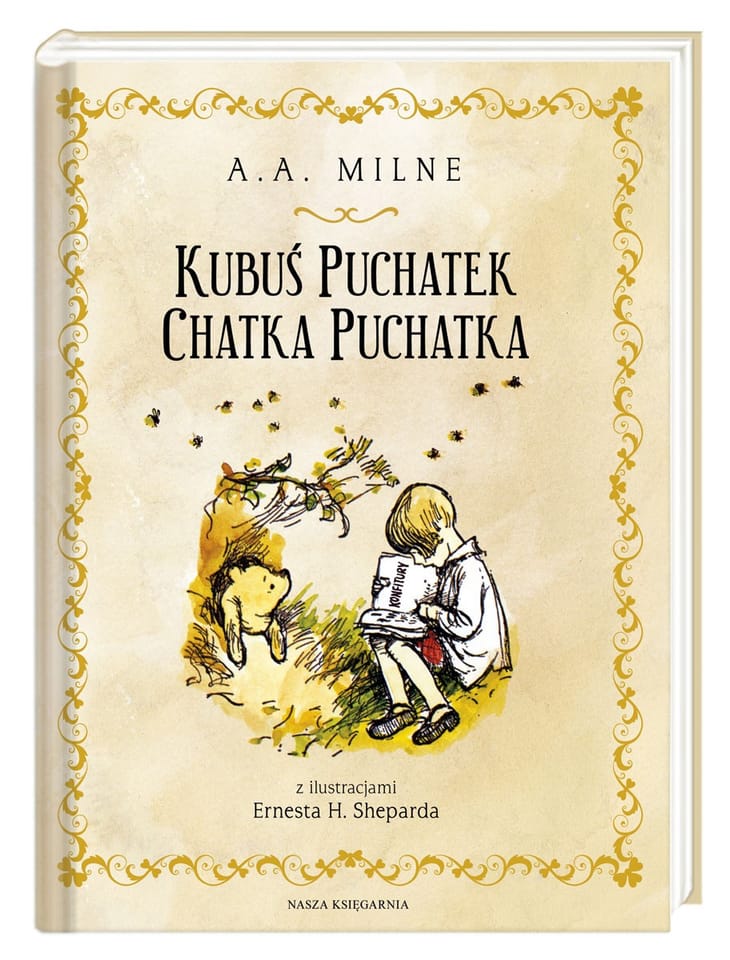Winnie the Pooh book. Pooh's cottage
Take a peek into the Hundred Acre Wood, where the world's most famous bear goes on fascinating adventures with his friends. Endowed with human characteristics, the animals amuse and amuse with their naivety on the one hand and their philosophical approach to life on the other. The extraordinary illustrations by Ernest H. Shepard and the excellent translation by Irena Tuwim have made the books about Christopher, Pooh, Eeyore and Piglet favourite reads for children and young people for many years.
Alan Alexander Milne (18821956) English writer, best known as the author of the books: Winnie the Pooh (1926) and Pooh Hut (1928). He was born in London as the third son of the headmaster of Henley House private school for boys. After graduating from it with high marks, he went on to study at Cambridge University, where, influenced by his teacher, the famous sci-fi author Herbert George Wells, he decided to become a writer. After leaving school, he tried to make a living from writing articles. Things began to go better for him when he started contributing regularly to Punch magazine in 1906. In 1913 he married the owner's goddaughter, Dorothy De Selincourt.
After the war, during which Milne fought at the front and from which he brought back the worst possible memories, the writer's period of literary success began. In 1920, his plays began to be performed, and in October his only son Christopher Robin was born.
Ernest Howard Shepard (18791976) was born in Lodsworth, Sussex, and spent his childhood in London. Following in his grandfather's footsteps, he began drawing ever since he learned to hold a pencil. When he was 10, his mother died and the family moved to Hammersmith. There he attended St Pauls School. Later, thanks to a scholarship, he continued his education at the Royal Academy Schools, where he met his first wife, Florence Chaplin. During the First World War, he earned the rank of major and a medal for bravery on the battlefield. Soon after returning from the war, he was invited to become a regular contributor to the weekly magazine Punch, where he met Alan Alexander Milne.













